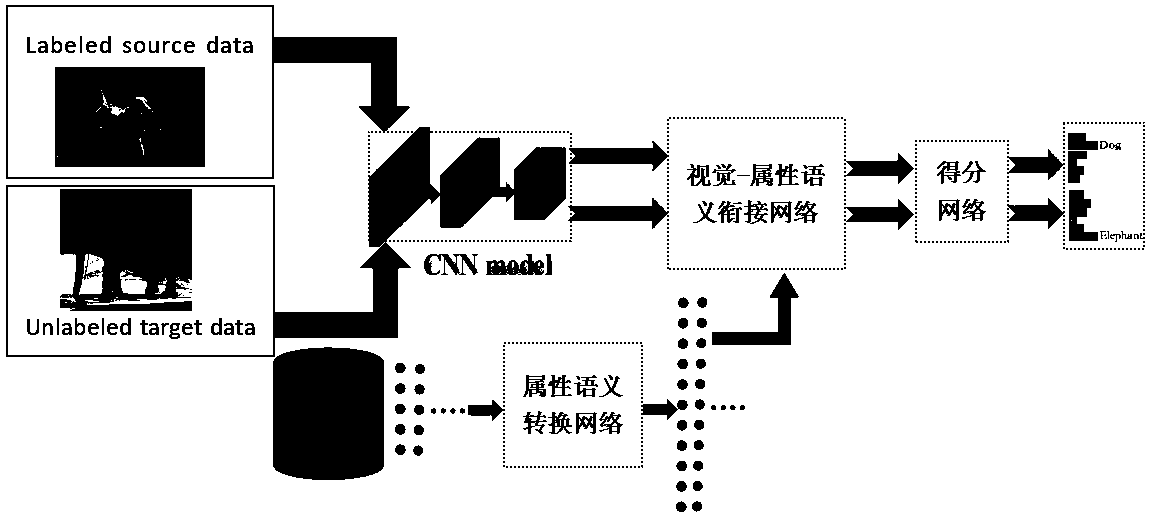Method for training zero-sample image classification by using total data
A technology of full data and sample images, applied in computer parts, instruments, character and pattern recognition, etc., can solve the problem of missing image category labels, and achieve the effect of solving the missing category labels, alleviating the problem of strong bias prediction, and increasing the loss.
- Summary
- Abstract
- Description
- Claims
- Application Information
AI Technical Summary
Problems solved by technology
Method used
Image
Examples
Embodiment Construction
[0039] The present invention will be further described below in conjunction with the accompanying drawings and embodiments.
[0040] Please refer to figure 1 , the present invention provides a zero-sample image classification model utilizing a full amount of data training, including a visual feature network, an attribute semantic conversion network, a visual-attribute semantic connection network and a score network; specifically comprising the following steps:
[0041] Step S1: dividing the full amount of data into source data and target data;
[0042] Step S2: input the source data set and target data set into the visual feature network, map the original image to the visual feature space, and obtain the image visual feature vector;
[0043] Step S3: the low-dimensional attribute semantics of the original image is mapped to high-dimensional by the semantic conversion network, and obtain the semantic feature vector;
[0044] Step S4: according to the image visual feature vect...
PUM
 Login to View More
Login to View More Abstract
Description
Claims
Application Information
 Login to View More
Login to View More - R&D
- Intellectual Property
- Life Sciences
- Materials
- Tech Scout
- Unparalleled Data Quality
- Higher Quality Content
- 60% Fewer Hallucinations
Browse by: Latest US Patents, China's latest patents, Technical Efficacy Thesaurus, Application Domain, Technology Topic, Popular Technical Reports.
© 2025 PatSnap. All rights reserved.Legal|Privacy policy|Modern Slavery Act Transparency Statement|Sitemap|About US| Contact US: help@patsnap.com



